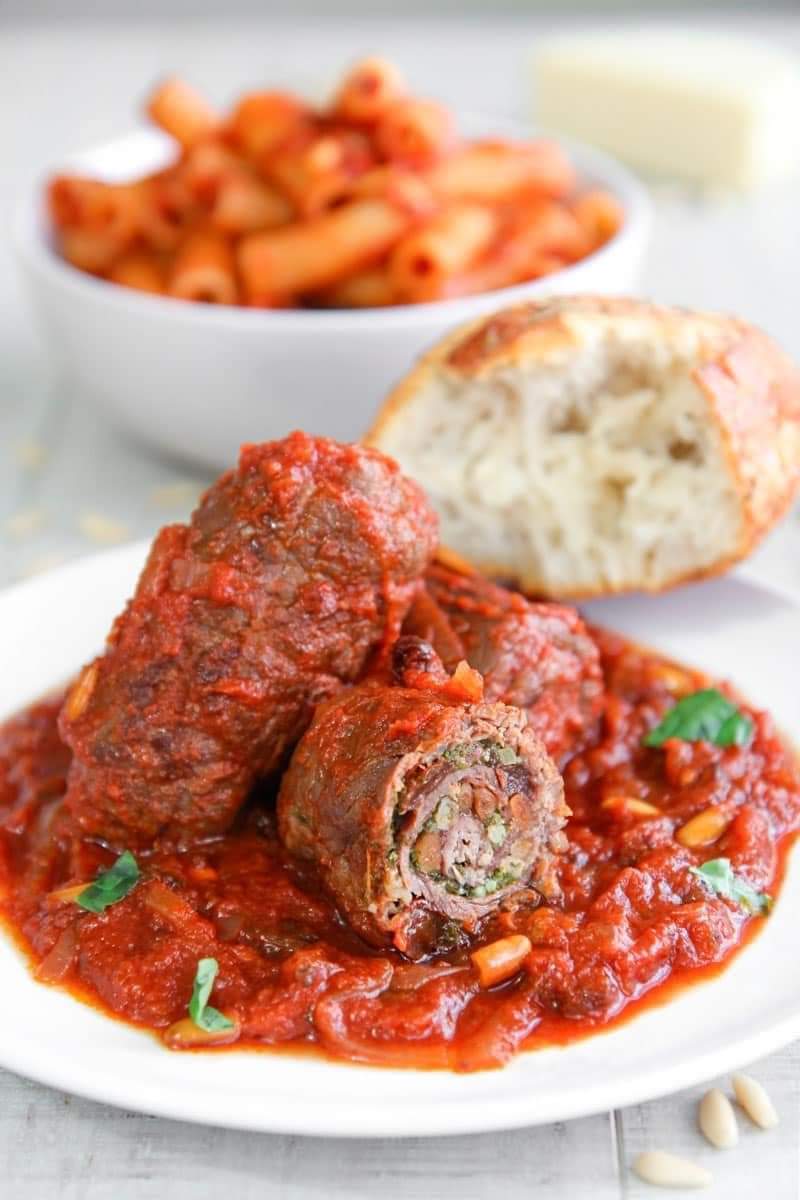Unveiling the Delight of Braciole: A Comprehensive Guide
Are you ready to embark on a flavorful journey with braciole? From its origins to cooking techniques and serving suggestions, this guide will equip you with everything you need to know to master this Italian classic.
Exploring the Origins of Braciole
1. Historical Roots
Braciole, pronounced as “brah-choh-leh,” originates from Southern Italy, particularly regions like Sicily, Calabria, and Campania. It is a beloved dish with a rich history, often prepared for special occasions and family gatherings.
2. Etymology
The term “braciole” is derived from the Italian word “braciola,” which refers to thinly sliced meat, typically rolled and filled with savory ingredients. It is commonly made with beef, although variations with pork or veal are also popular.
Understanding the Ingredients
Before diving into the cooking process, let’s take a closer look at the key components of braciole:
1. Meat
Traditionally, thinly sliced cuts of beef, such as flank steak or top round, are used for braciole. The meat is pounded to tenderize and flatten it before being filled and rolled.
2. Filling
The filling for braciole varies depending on regional preferences and personal taste. Common ingredients include breadcrumbs, Parmesan cheese, garlic, parsley, and sometimes cured meats like prosciutto or salami.
3. Sauce
Braciole is often simmered in a flavorful tomato-based sauce, which infuses the meat with richness and depth of flavor. The sauce may also contain onions, garlic, herbs, and wine for added complexity.
Mastering the Art of Braciole Preparation
Now, let’s dive into the step-by-step process of preparing and cooking braciole:
1. Pound the Meat
Place the thinly sliced beef between two sheets of plastic wrap and gently pound it with a meat mallet until it is uniformly thin. This tenderizes the meat and ensures even cooking.
2. Season and Fill
Season the pounded meat with salt and pepper, then layer it with the filling ingredients of your choice. Roll the meat tightly around the filling, securing it with butcher’s twine or toothpicks.
3. Sear the Braciole
Heat olive oil in a large skillet over medium-high heat. Sear the braciole on all sides until browned, creating a flavorful crust. This step adds depth of flavor to the dish.
4. Simmer in Sauce
Transfer the seared braciole to a pot or Dutch oven and cover it with tomato sauce. Allow the braciole to simmer gently in the sauce for 1-2 hours, or until the meat is tender and the flavors have melded together.
Serving Suggestions and Pairings
Braciole is a versatile dish that can be enjoyed in various ways. Here are some serving suggestions and pairing ideas to enhance your dining experience:
- Classic Pairings: Serve braciole with a side of creamy mashed potatoes or al dente pasta to soak up the delicious sauce. A simple green salad with a tangy vinaigrette makes a refreshing accompaniment.
- Wine Pairings: Pair braciole with a medium-bodied red wine, such as Chianti or Sangiovese, to complement the rich flavors of the dish. For a white wine option, try a crisp Pinot Grigio or Sauvignon Blanc.
- Garnish and Presentation: Sprinkle freshly chopped parsley or grated Parmesan cheese over the braciole before serving to add a pop of color and flavor. Garnish with a sprig of fresh basil for a touch of freshness.
Conclusion
Braciole is more than just a dish – it’s a culinary experience that celebrates the vibrant flavors of Italian cuisine. Whether you’re a seasoned chef or a novice cook, mastering the art of braciole will elevate your cooking repertoire and delight your taste buds. So gather your ingredients, roll up your sleeves, and prepare to savor the savory goodness of homemade braciole!

